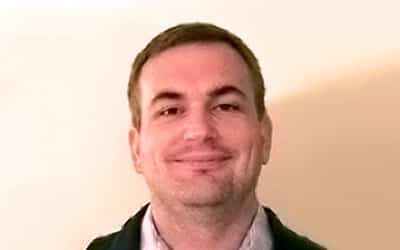At a time when most boys were riding bikes and playing sandlot sports, David Enga was already on his way to becoming a technology innovator. “My background is actually very technical,” says Enga. “I started writing software when I was about 10 years old. When I was in elementary school in the early 1980’s, my class got some old Commodore PET computers. These things had 16K of RAM and monochrome monitors. I just sat down and started playing around with different programming examples. My parents recognized that I was really interested in it and so they scraped up the money to buy a Commodore 64. They were really supportive.”
Evidently it was time and money well spent. When Enga was just a teenager, he started a small family software company with his brother and father. “The company is still in business today and doing really well,” he says. When he finished high school, Enga left his family’s software business to attend Yale University to study computer science.
After graduation, Enga went to work in the Defense and Aerospace industry in Hawaii. “It was a nice place to go after college. I was fortunate to be able to work on some really exciting stuff,” he says. “After a few years, the company transferred me to Northern Virginia. It was a great experience.”
He eventually left that company in the year 2000 to start a company called Internet Energy Systems. “The company aimed to provide software as a service for monitoring smart meters on the electrical grid in real-time,” says Enga. “We built some interesting smart grid hardware and software before smart grid was a well-known term. The whole purpose was letting large customers know exactly how much energy they were using at any given time and then help them reduce their consumption.” The company got caught up in the bursting of the Dot-com bubble, so Enga ended up back in the defense industry.
A few years after that is when the Craxel story started. “One of our co-founders, Charles Voas, has a PhD in mathematics,” explains Enga. “He and I were considering the problem of how to handle all of the information from the proliferation of sensors that provided location-based information—for example, cell phones with GPS. In computer science, there are severe limitations with indexing lots of spatial data and rapidly searching it. Chuck taught me a way to evaluate spatial data probabilistically. From there, we started building a new kind of probabilistic database architecture that let us take billions of shapes and search them very quickly. It was very different from relational and NoSQL database architectures. We incorporated Craxel to hold all our intellectual property as we were creating this technology.”
“Over the years we looked at different applications for the technology and there are some really interesting ways that it will be used in the future, like in augmented reality, virtual reality, gaming, autonomous cars, and artificial intelligence,” says Enga.
One of Craxel’s initiatives led to an important breakthrough. The company built a prototype in the cybersecurity space that could determine the probability of compromise for anything on a network. “We showed our prototype to a few people and decided we didn’t have enough data to properly train the algorithms for it. We paused to consider what to do next and then one day I was sitting in my home office and had a crazy thought. We could combine our probabilistic spatial search with some cryptography to solve the key impediments to high performance searchable encryption.”
Enga says searchable encryption is something that academics have been working on for years. The idea is that you can store information in a database in a strongly encrypted form, and you would never have the keys in the database, yet you could still search it. “The problem with searchable encryption in the past is that either it was not fast enough, or it leaked information that would let you infer things about the information that was in the database,” says Enga. “We solved the key performance and information leakage problems and now you won’t even notice a difference in performance between our encrypted database and other databases for most use cases. In many cases, it is actually a lot faster.”
Enga says Craxel has been rather stealthy in their operations to date, working with a select group of customers. “We realized that our technology also solves the security, performance and scalability problems that are stalling blockchain adoption in the enterprise. Between our database and distributed ledger products, we’ve got interesting things going on in supply chain, payments, health care, defense, Internet of Things, IT infrastructure, and cryptocurrency. We have a lot on our plate,” according to Enga.
He is married with two daughters, ages 12 and 14. Dave is a self-described basketball junkie and plays in a local league. “It’s called a legends league because we’re all over 40,” he says. “That’s a nice way of saying we’re getting older.”

